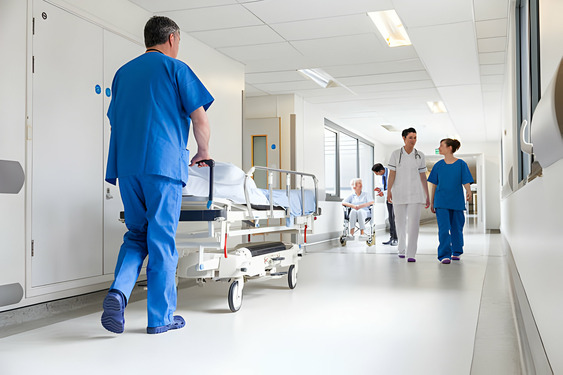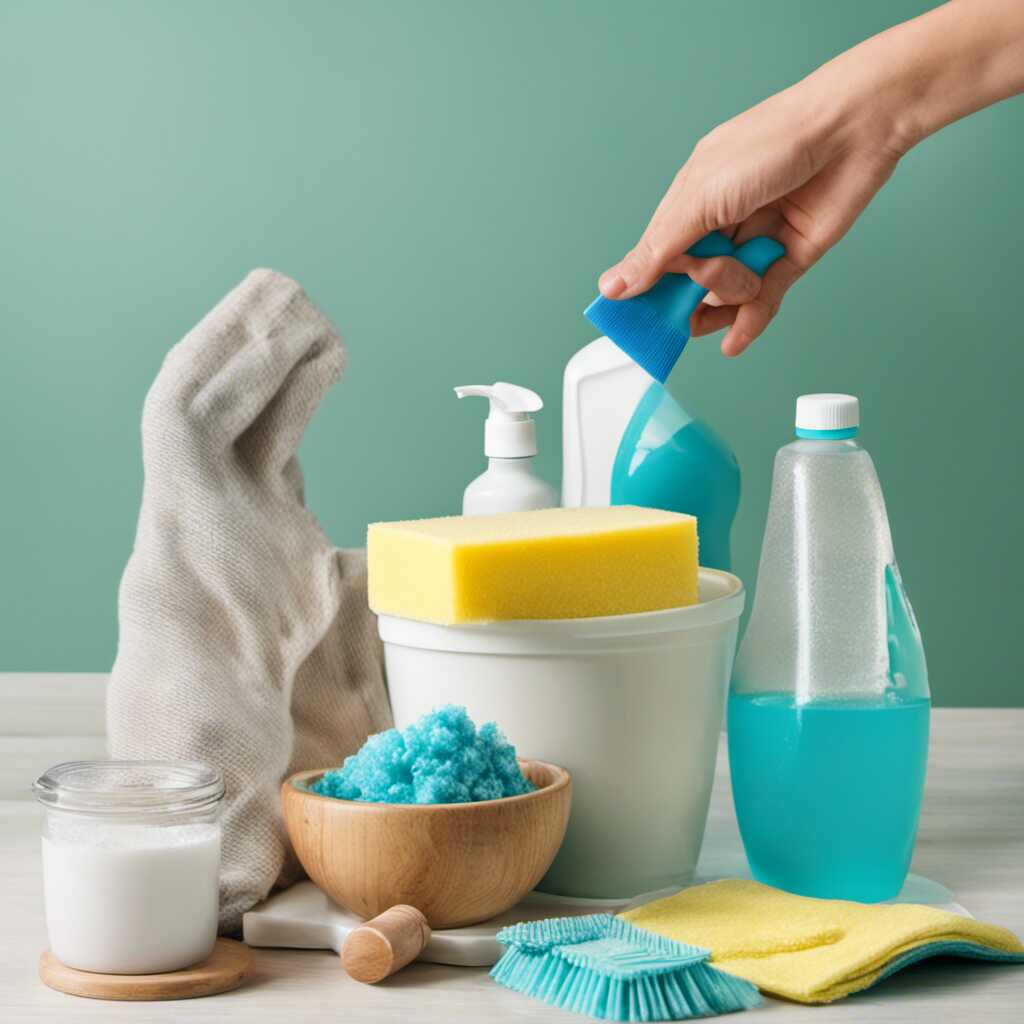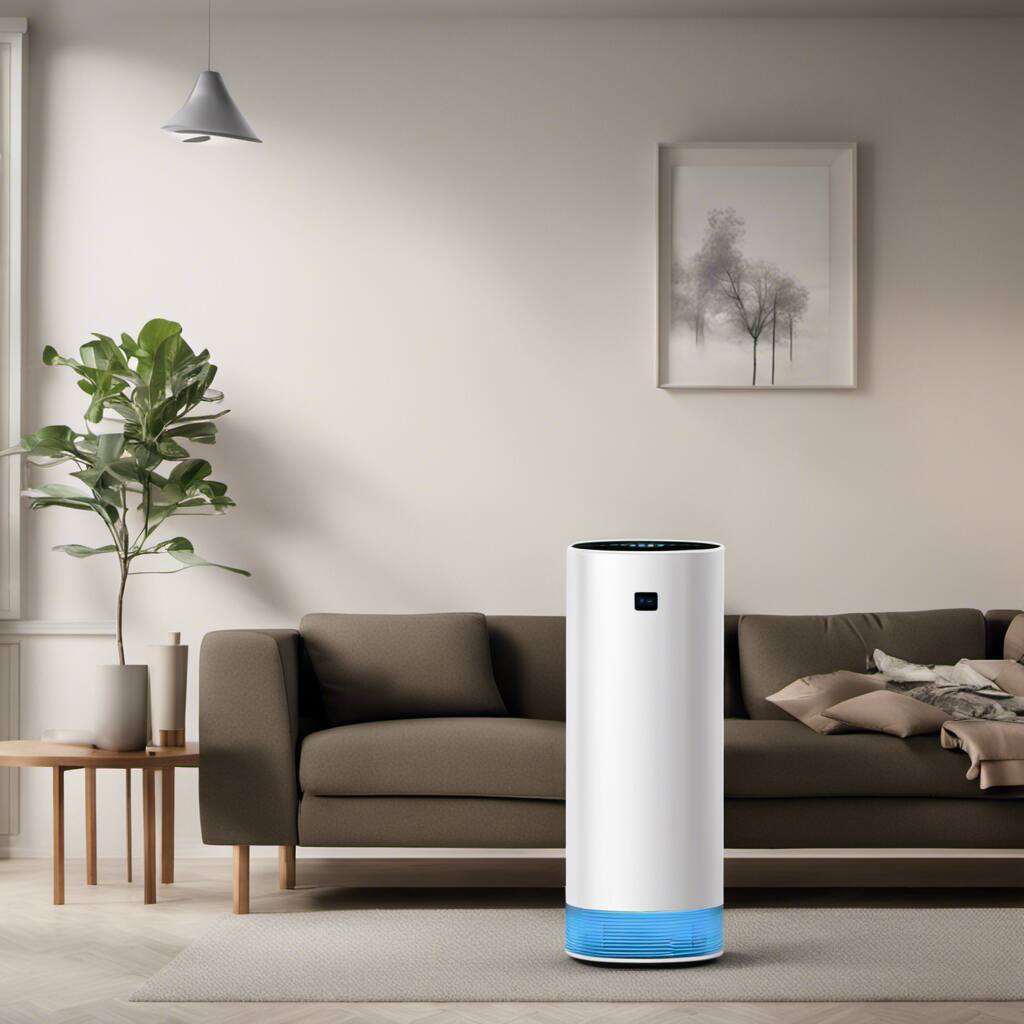
The importance of strict disinfection procedures cannot be overstated in the hallowed halls of healthcare facilities where care and healing become one. This guide takes you inside “Healthcare Facility Disinfection: Protecting Patients and Staff,” exploring the crucial elements of upholding a hygienic and safe atmosphere, protecting the health and safety of patients as well as the committed healthcare providers.
From comprehending the significance of disinfection to investigating practical approaches, setting up procedures, guaranteeing compliance, and embracing cutting-edge technologies, each section serves as a lighthouse guiding the way towards a safer healthcare setting.
See also our post on How to Clean Your Home Gym: Hygiene for a Healthier Workout
The Importance of Healthcare Facility Disinfection
Mitigating the Spread of Infections
Disinfection plays a pivotal role in curbing the spread of infections within healthcare settings. Pathogens can linger on surfaces, posing a threat to vulnerable patients. Rigorous disinfection is a proactive measure to create a protective barrier against potential contaminants.
Protecting Vulnerable Populations
Healthcare facilities cater to individuals with compromised immune systems, making them susceptible to infections. Effective disinfection is paramount in shielding these vulnerable populations, including elderly patients, newborns, and individuals undergoing medical treatments that weaken their immune response.
Preventing Healthcare-Associated Infections (HAIs)
Healthcare-Associated Infections (HAIs) pose a significant risk within medical settings. Disinfection strategies aim to minimize the occurrence of HAIs, reducing the burden on both patients and healthcare providers. A clean environment is fundamental to the ethos of patient safety.
Maintaining Regulatory Compliance
Stringent regulations govern healthcare facility cleanliness. Adhering to these regulations is not only a legal requirement but also an ethical commitment to patient care. Effective disinfection protocols ensure compliance with regulatory standards, fostering an environment of trust and professionalism.
Boosting Staff and Patient Confidence
A clean and disinfected healthcare facility instills confidence in both staff and patients. The visual cues of a well-maintained environment contribute to a positive healthcare experience. Staff morale is enhanced, and patients feel reassured that their well-being is a top priority.
Effective Disinfection Methods
Chemical Disinfectants: Understanding Their Roles
Chemical disinfectants are the backbone of healthcare facility cleanliness. Understanding the roles of different disinfectants is crucial. From high-level disinfectants for critical instruments to low-level disinfectants for surfaces, each serves a specific purpose in maintaining a hygienic environment.
Proper Hand Hygiene Practices
Hand hygiene is a frontline defense against infections. Proper handwashing techniques for healthcare professionals, staff, and visitors are paramount. Accessible hand sanitizing stations and education on effective hand hygiene contribute to a comprehensive disinfection strategy.
Environmental Surface Disinfection
Surfaces within healthcare facilities harbor potential pathogens. Regular and thorough disinfection of surfaces, including doorknobs, bedrails, and medical equipment, is essential. Selecting appropriate disinfectants based on surface materials ensures effective decontamination without causing damage.
Airborne Infection Control Measures
Airborne pathogens present a unique challenge. Implementing measures such as ventilation systems, air filtration, and UV-C disinfection technologies contributes to controlling the spread of airborne infections within healthcare settings. Proper air circulation is integral to a comprehensive disinfection plan.
Terminal Cleaning for Patient Rooms
Patient rooms demand meticulous attention during and after occupancy. Terminal cleaning involves a thorough disinfection process, addressing high-touch surfaces, medical equipment, and the surrounding environment. This ensures that each patient is welcomed into a clean and safe space.
Establishing Disinfection Protocols
Customized Protocols for Different Areas
Not all areas within a healthcare facility have the same risk levels or cleaning requirements. Customizing disinfection protocols for different areas, such as operating rooms, waiting areas, and restrooms, ensures a targeted and effective approach to maintaining cleanliness.
Training Healthcare Staff on Disinfection Procedures
A well-trained healthcare staff is a cornerstone of effective disinfection. Providing comprehensive training on proper disinfection procedures, including the correct use of disinfectants and adherence to established protocols, is crucial. Regular refresher courses enhance staff competency.
Incorporating Technology for Enhanced Protocols
Emerging technologies offer opportunities to enhance disinfection protocols. Automated cleaning robots, UV-C light devices, and antimicrobial surfaces are examples of innovations that can augment traditional cleaning methods. Integrating these technologies strengthens the overall disinfection strategy.
Implementing Checklists for Routine Inspections
Routine inspections are essential for maintaining consistent disinfection standards. Implementing checklists for routine inspections ensures that no area or process is overlooked. Regular audits foster accountability and provide an avenue for continuous improvement.
Adapting Protocols to Emerging Threats
The landscape of infectious diseases is dynamic. Disinfection protocols must be adaptable to emerging threats. Establishing a flexible framework allows healthcare facilities to respond swiftly to new challenges, incorporating updated guidelines and technologies to address evolving risks.
See also our post on Tips for Cleaning Medical Equipment: Ensuring Sterility in Healthcare Facilities
Ensuring Compliance with Standards
Regular Audits and Assessments
Regular audits and assessments are vital components of ensuring compliance with disinfection standards. Conducting thorough inspections of healthcare facilities identifies areas for improvement and verifies adherence to established protocols, fostering a culture of continuous quality improvement.
Documentation of Disinfection Activities
Documentation serves as a tangible record of disinfection activities. Maintaining detailed records of cleaning schedules, disinfectant usage, and any deviations from protocols is crucial. Accurate documentation not only ensures compliance but also facilitates transparency in the event of inspections.
Staff Accountability and Responsibility
Instilling a sense of accountability among healthcare staff is integral to compliance. Each team member should understand their role in maintaining a clean environment and adhere to established disinfection protocols. Regular training and reminders reinforce individual responsibility.
Collaboration with Infection Control Teams
Infection control teams play a pivotal role in ensuring compliance. Collaborating with these teams fosters a multidisciplinary approach to healthcare facility cleanliness. Regular communication and shared insights contribute to a holistic strategy for infection prevention.
Continuous Education on Updated Standards
Standards and guidelines for healthcare facility disinfection may evolve. Continuous education on updated standards is essential for maintaining compliance. Healthcare staff should stay informed about any changes in best practices, ensuring that their disinfection protocols remain aligned with the latest recommendations.
Embracing Emerging Disinfection Technologies
UV-C Disinfection Systems
UV-C disinfection systems are gaining prominence in healthcare facilities. These devices use ultraviolet light to eliminate pathogens, offering an additional layer of protection. Proper training on the use of UV-C devices and incorporating them into existing protocols enhances disinfection efficacy.
Antimicrobial Surfaces
Incorporating antimicrobial surfaces into healthcare environments is a preventive measure. These surfaces are designed to resist the growth of microorganisms, contributing to a cleaner and safer environment. Choosing materials with inherent antimicrobial properties is a strategic consideration.
Automated Cleaning Robots
Automated cleaning robots are revolutionizing disinfection processes. These robots can navigate through healthcare facilities, using UV-C light or other disinfection methods to sanitize surfaces. Integrating these robots into routine cleaning routines enhances efficiency and coverage.
Wireless Monitoring Systems for Hand Hygiene
Wireless monitoring systems are employed to track hand hygiene practices. These systems use technology to monitor handwashing compliance among healthcare professionals. Real-time feedback encourages adherence to proper hand hygiene protocols, reducing the risk of infections.
Innovations in Chemical Disinfectants
Ongoing research leads to innovations in chemical disinfectants. Healthcare facilities can benefit from new formulations that offer improved efficacy, reduced environmental impact, and faster kill times. Staying informed about these innovations allows facilities to continually enhance their disinfection practices.
Navigating Challenges in Healthcare Facility Disinfection
Addressing Surface Compatibility with Disinfectants
Not all surfaces respond well to every disinfectant. Addressing surface compatibility is crucial to prevent damage while ensuring effective disinfection. Conducting compatibility tests and selecting appropriate disinfectants for different materials is a nuanced aspect of healthcare facility cleaning.
Balancing Disinfection Efficacy and Environmental Impact
Striking a balance between disinfection efficacy and environmental impact is a consideration for healthcare facilities. Opting for environmentally friendly disinfectants without compromising effectiveness aligns with broader sustainability goals and promotes responsible healthcare practices.
Managing High-Touch Surfaces Effectively
High-touch surfaces demand special attention. Managing these surfaces effectively involves frequent disinfection, often multiple times a day. Collaborating with healthcare staff to identify and prioritize high-touch areas ensures a targeted and proactive approach to disinfection.
Overcoming Resistance to Change
Implementing new disinfection protocols or technologies may face resistance from staff. Overcoming this resistance involves clear communication about the benefits, providing comprehensive training, and addressing concerns. Involving staff in decision-making processes fosters a sense of ownership in the implementation of changes.
Adapting to Evolving Pathogens
The adaptability of pathogens poses a constant challenge. Healthcare facilities must remain vigilant and adaptable in the face of evolving pathogens. Continuous education, staying informed about emerging infectious diseases, and updating disinfection protocols accordingly are essential strategies.
See also our post on How to Clean Your Home Gym: Hygiene for a Healthier Workout
Conclusion
The protective shield of disinfection is woven into the fabric of healthcare, where science and compassion meet. This in-depth examination of “Healthcare Facility Disinfection: Protecting Patients and Staff” highlights the complex aspects of upholding a hygienic and safe healthcare environment. From the importance of disinfection to practical approaches, procedures, compliance, and welcoming innovations, every component contributes to the overall objective of preserving the health and well-being of everyone who enters the healing embrace of healthcare facilities. As we confront the obstacles and adopt new technologies, may this guide act as a beacon, guaranteeing that healthcare environments continue to be havens of care where patients’ safety is of utmost importance and the quest of health is paramount.







